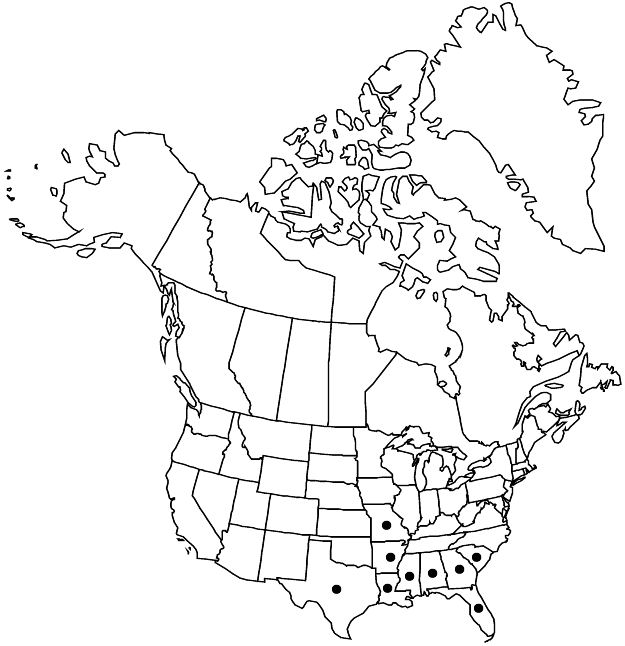Crataegus viridis var. lanceolata
Ann. Missouri Bot. Gard. 22: 561. 1935.
Stems: trunk bark light gray, ± exfoliating; 1-year old twigs gray. Leaves: blade ± lanceolate, narrowly elliptic to narrowly obovate or oblong, 2.5–6 cm, thin, base cuneate, lobes 0 or obscure else rarely 1 per side, distinct, but not on most leaves, sinuses shallow, max LII 5 (–20) %, margins serrulate-crenate, mainly in distal 2/3, sometimes entire, teeth to 1 mm, venation craspedodromous, sometimes semicamptodromous, veins 3–7 per side (often dividing before margin), apex acute to acuminate, surfaces glabrous except abaxially with tufts of hair in vein-axils. Inflorescences: branches glabrous. Flowers: hypanthium glabrous.
Phenology: Flowering Apr; fruiting Sep–Nov.
Habitat: Moist, fertile, alluvial woodlands, agricultural derivatives of these
Elevation: 10–200 m
Distribution

Ala., Ark., Fla., Ga., La., Miss., Mo., S.C., Tex.
Discussion
The range of var. lanceolata is poorly documented; it appears to be rather common in Louisiana and extends into Missouri, into eastern Texas, and through Alabama to South Carolina. In its most extreme expression, it is readily distinguished; it intergrades with both var. ovata and var. viridis. The foliage, with its distinctive venation, and the usually small- and few-flowered inflorescences are characteristic. Particularly large, oblong leaf forms of var. lanceolata have been referred to Crataegus interior.
Selected References
None.
Lower Taxa
"thin" is not a number."pubescent" is not a number. "glabrous" is not a number."adnate" is not a number."dm" is not declared as a valid unit of measurement for this property.